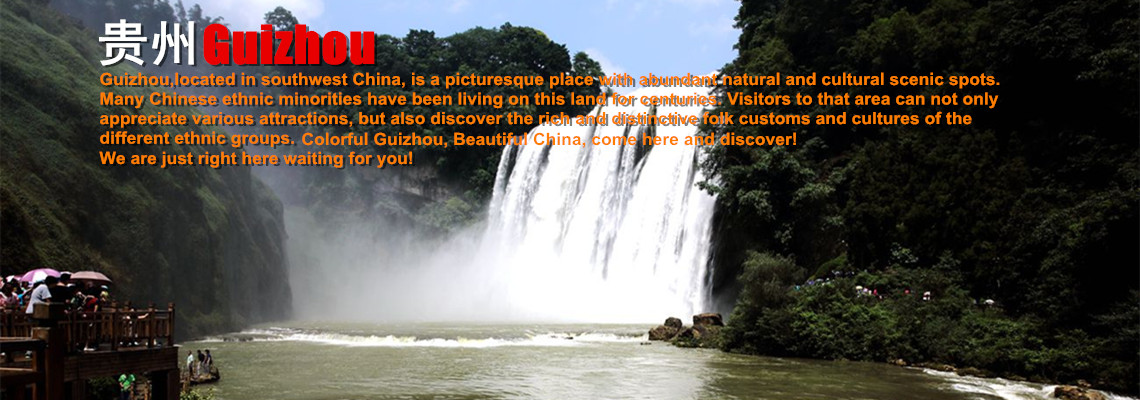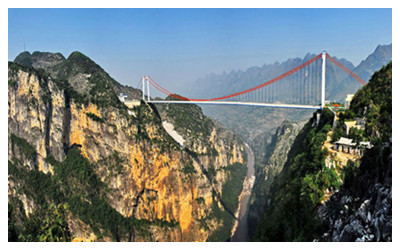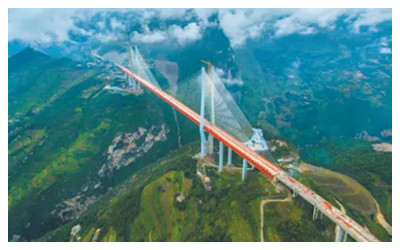
Beipanjiang River Bridge
 Beipanjiang River Bridge is the highest bridge in the world upon its opening in 2003. With 366 meter high, Beipanjiang Bridge Guanxing highway became the second Chinese span in just two years to take this honor. The first was 2001’s Liuguanghe bridge.
Beipanjiang River Bridge is the highest bridge in the world upon its opening in 2003. With 366 meter high, Beipanjiang Bridge Guanxing highway became the second Chinese span in just two years to take this honor. The first was 2001’s Liuguanghe bridge.
In addition, the Beipanjiang became the first bridge to break the 1,000 foot and 300 meter height thresholds as well as the first suspension bridge in the world to surpass the height of Colorado’s Royal Gorge bridge after a 74-year reign. The bridge is also one of 4 Beipanjiang River crossings to have been among the world’s 10 highest. The first was the 902 foot high (275 meter) Beipanjiang Railway bridge which opened in 2001 and was the highest train bridge in the world until 2016 when it was surpassed by the Beipanjiang Qinglong and Najiehe Railway Bridges. The third bridge to cross high above the Beipanjiang opened in 2009 on the Guiyang to Kunming Highway with a suspension span 1,083 feet (330 meters) above the river. Then in 2016 the Beipanjiang Bridge Duge opened with a World Record deck height of 564 meters. While not in the 300+ meter super-high category as these Beipan crossings, there are several other high bridges that have been built over the Beipan river gorge including the the Beipanjiang Bridge on the Shuipan expressway with the world’s longest span high-level beam bridge, the Beipanjiang Bridge Wang’an expressway and the Beipanjiang Bridge Zhenfeng. Most of these bridges are spaced about 50 miles apart from each other. No other river on earth outside China has more than one or two high bridges over it - the Beipanjiang has 8 with more to come!
The word Beipanjiang (pronounced Bay-Pan-Gee-Ang) translates into North Winding River with the word “Bei” meaning north and “Pan” meaning winding. Cutting a huge swath from the northwest end of Guizhou Province to the southwest where it becomes the Hongshui he river at the border of Guangxi Province, the  Beipanjiang River traverses through some of China’s most spectacular mountain gorges. When China began to expand its road and railway system in the 1990s, the river became the biggest obstacle between the city of Guiyang and the city of Kunming. The river also proved to be the biggest barrier between the mountain city of Xingyi and Guiyang. So when it was decided to build a modern two lane highway from Xingyi to the Guiyang highway, an extremely high and narrow bridge site was chosen near the town of Huajiang.
Beipanjiang River traverses through some of China’s most spectacular mountain gorges. When China began to expand its road and railway system in the 1990s, the river became the biggest obstacle between the city of Guiyang and the city of Kunming. The river also proved to be the biggest barrier between the mountain city of Xingyi and Guiyang. So when it was decided to build a modern two lane highway from Xingyi to the Guiyang highway, an extremely high and narrow bridge site was chosen near the town of Huajiang.
The Beipanjiang River bridge was one of 4 medium sized suspension bridges that were designed and built in the same time period by the Major Bridge Reconnaissance Design Institute in Wuhan, Hubei. The bridges all share common traits including an extremely thin 2 foot (.6 mtr) thick prestressed concrete slab deck and cable suspenders just 16 feet (5 mtrs) apart. Since all 4 bridges were of similar length and in similar gorge settings, it was economical and efficient to design them at the same time. The other 3 include the Azhihe, Xixi and Luojiaohe bridges. All four are among the world’s 60 highest bridges. One modification made to the Beipanjiang 2003 that was not made to the other 3 spans was the addition of a curved wind breaker along the edge of the deck. Painted blue, it makes the bridge deck look even thinner and lighter than it already is.
Despite its fall from the top spot among China’s highest spans, the Beipanjiang Bridge Guanxing is still one of the most vertigo inducing of all with cliffs that plummet into a void that seems to have no bottom. The cliff beneath the west side of the bridge is nearly vertical for 800 feet (244 meters). The Beipanjiang is also the world’s first “10 second bridge”. What, you may ask, is that? It is a bridge so high that an object falling from the deck will be in free fall for more than 10 seconds before hitting the water. The bridge is perfect for tourists with pedestrian friendly parking areas on both sides of the gorge as well as walkways along the edges of the span.



 Ask Questions ?
Ask Questions ?